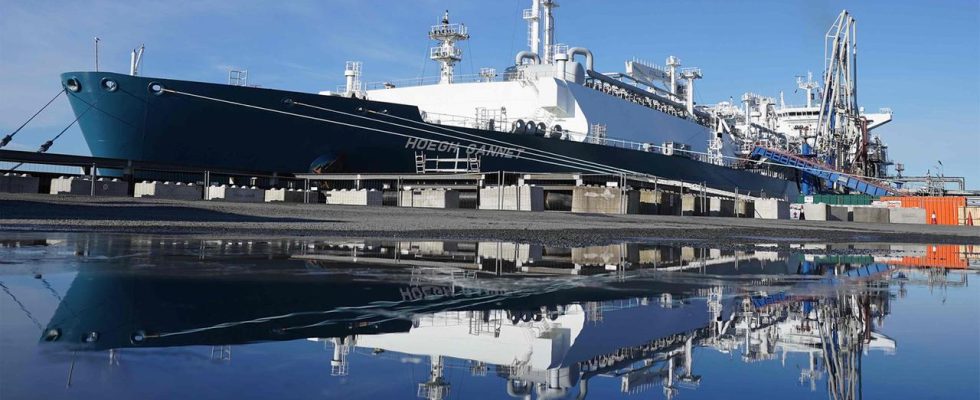They cost billions – but so far hardly any natural gas has flowed to Germany via the LNG terminals. Around half a year after they started, they only account for a fraction of German gas imports.
The domestic terminals for importing liquefied natural gas (LNG) have so far made only a small contribution to German gas imports. According to data from the Federal Network Agency, Germany imported a total of around 526 terawatt hours of gas in the first half of the year, almost half of it from Norway. In contrast, only 33.8 terawatt hours came via the three LNG terminals in Wilhelmshaven, Brunsbüttel and Lubmin. This corresponds to a share of 6.4 percent.
LNG terminal Wilhelmshaven is in front
The terminals were launched around six months ago. Wilhelmshaven plays a pioneering role in this. The floating facility was the first to deliver LNG to Germany in December. Figures from the Federal Ministry of Economics and the Federal Network Agency also show that by far the most liquefied natural gas has been fed in via Wilhelmshaven.
From the beginning of January to the end of June, around 21.8 terawatt hours of gas were imported via Wilhelmshaven. 5.2 terawatt hours were fed in via Brunsbüttel. According to the private operator Deutsche Regas, the terminal in Lubmin contributed almost 7 terawatt hours. According to the Federal Association of Energy and Water Industries (BDEW), Germany obtains its LNG for the most part from the USA.
Further LNG terminals already in preparation
For this year, the federal government has announced LNG import capacities of 13.5 billion cubic meters of gas. That corresponds to more than 130 terawatt hours – and thus about four times the amount of LNG that was actually imported in the first half of the year. By 2027, import capacities are even expected to increase to around 54 billion cubic meters.
Therefore, further LNG terminals are already in preparation. Among other things, in Stade, Lower Saxony, gas is also to be landed from next winter. Most recently, Mukran on Rügen was also included in the law as a possible location – despite resistance from residents, environmental organizations, the tourism industry and the state government in Mecklenburg-Western Pomerania.
make it federal government overcapacity?
The new LNG infrastructure is a direct response to Russia’s war against Ukraine. The federal government wants to overcome one-sided dependencies with the liquefied natural gas. It takes a lot of money to do this – the federal government has already provided 9.8 billion euros by 2038.
However, the Ministry of Economic Affairs is already anticipating even higher spending. Critics fear that overcapacity will be created for fossil energy, which is larger than would be necessary to replace the previous gas imports from Russia.

